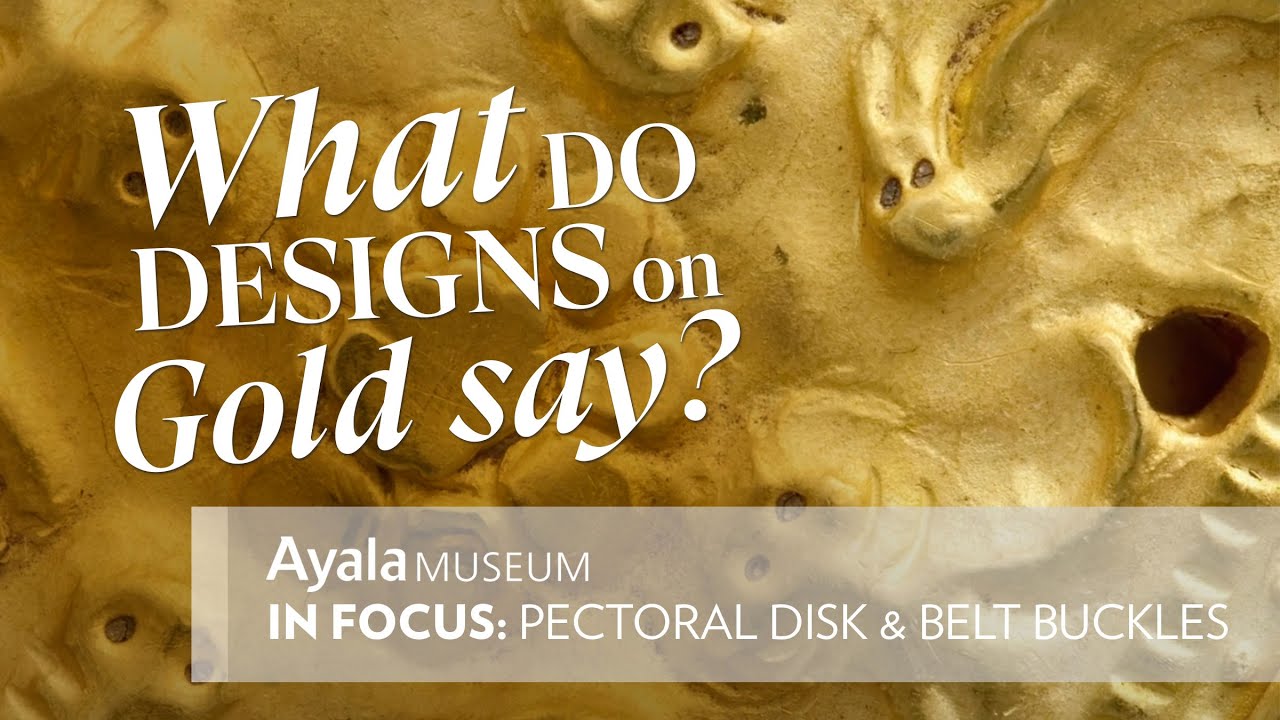Curator's Tour | Ceramics and Cultural Currency: Exchanges of Pottery and Prestige
Summary
TLDRThe exhibition 'Ceramics and Cultural Currency: Exchanges of Pottery and Prestige' at Ayala Museum explores the abundance of Asian trade ceramics in the Philippines. It features over 100 objects from Roberta T. Villanueva's collection, highlighting pre-colonial trade and cultural ties with China and Southeast Asia. The ceramics, durable and technologically advanced, served practical and social functions, from food storage to rituals and social status symbols. They also played a role in bride price negotiations and were considered heirloom wealth, reflecting the Philippines' rich historical connections.
Takeaways
- 🏛️ The exhibition 'Ceramics and Cultural Currency' at Ayala Museum explores the abundance of trade ware ceramics from Mainland Asia found in the Philippines.
- 🌟 The Roberta T Villanueva collection, on loan since 2007, is one of the most comprehensive collections of trade ware ceramics in the Philippines.
- 📚 The exhibition sheds light on the Philippines' commercial and cultural ties with China and Southeast Asia before Spanish colonization.
- 🚢 Early Filipinos were active seafaring traders with connections to China, Champa, Funan, Malacca, and Timur, as revealed by Chinese and European literary sources.
- 🗺️ The distribution of trade ceramics indicates the interconnections between coastal and inland communities in the archipelago.
- 🗝️ Ceramics, derived from the Greek word 'keramecos', are durable artifacts that reflect a community's understanding of resources and technological processes.
- 🏺 Earthenware pottery was widely used in ritual practices and as funerary goods in the Philippines before the Spanish colonial era.
- 🏭 Chinese kiln technology advanced to produce high-fired, vitrified ceramics that were more durable than local earthenware.
- 🌐 The variety of Asian trade ceramic styles appealed to different cultures, including the Philippines, where they served as vessels for community and social interactions.
- 🍽️ Trade ware ceramics were used for food storage and processing, and also to display wealth and social standing during social gatherings.
- 💰 These ceramics were valuable not only for their practical use but also as heirloom wealth, used in rituals, and as burial vessels, reflecting their multifunctional role in society.
Q & A
What is the main focus of the exhibition at the Ayala Museum?
-The exhibition focuses on the role of ceramics as a cultural currency and how trade ceramics from Mainland Asia are found abundantly in the Philippine archipelago.
Who are the curators of the exhibition?
-The exhibition is co-curated by Dentan Mina, Associate Curator, and Senior Curator Kenneth Esguera.
What is the significance of the Roberta T. Villanueva collection featured in the exhibition?
-The Roberta T. Villanueva collection is one of the most comprehensive collections of trade ware ceramics found in the Philippines, highlighting the country's cultural heritage and historical ties with China and Southeast Asia.
How does the exhibition utilize archaeological evidence to understand the pre-colonial past of the Philippines?
-The exhibition uses archaeological evidence such as earthenware pottery and boat building techniques to indicate shared technologies in the region dating back to 400 BC.
What role did early Filipinos play in trade according to Chinese and European literary sources?
-According to these sources, early Filipinos were active seafaring traders with relationships with China, Champa, Funan, Malacca, and Timur, among others.
How does the distribution of trade ceramics throughout the archipelago reflect the interconnections between communities?
-The wide distribution of trade ceramics illustrates the networks of interconnections between coastal and inland communities, indicating a complex trade and cultural exchange.
What is the origin of the word 'ceramics'?
-The word 'ceramics' comes from the Greek word 'keramecos,' which means 'of potter's earth' or 'clay.'
How does the production of ceramics reflect a community's understanding of resources and technology?
-The production of ceramics reflects a community's sophisticated understanding of resources and technological processes, as well as adept physical skills, as seen in the use of high-fired ceramic goods from Mainland Asia.
What technological advancements allowed for the mass production of ceramics in China?
-The perfection of kiln technology with temperatures reaching 1200 degrees Celsius in the late 9th century allowed for the mass production of ceramics in China.
How did the Chinese counter piracy trade ban in the 14th to 15th centuries affect the production of ceramics?
-The trade ban encouraged Thai and Vietnamese potters to capitalize on the growing demand from the Southeast Asian market and the rest of the world, leading to an increase in ceramic production.
What social functions did trade ware ceramics serve in the Philippines?
-Trade ware ceramics functioned as vessels for community and social interactions, as well as a medium or connection to the spirits. They were also used in rituals, offerings, and sacrifices.
How were ceramics used in burial practices in the Philippines?
-Ceramics were used in primary and secondary burial vessels, with carved limestone, earthenware pottery, and imported stoneware jars being used for interment, signifying status and providing a warm welcome in the afterlife.
Outlines

Этот раздел доступен только подписчикам платных тарифов. Пожалуйста, перейдите на платный тариф для доступа.
Перейти на платный тарифMindmap

Этот раздел доступен только подписчикам платных тарифов. Пожалуйста, перейдите на платный тариф для доступа.
Перейти на платный тарифKeywords

Этот раздел доступен только подписчикам платных тарифов. Пожалуйста, перейдите на платный тариф для доступа.
Перейти на платный тарифHighlights

Этот раздел доступен только подписчикам платных тарифов. Пожалуйста, перейдите на платный тариф для доступа.
Перейти на платный тарифTranscripts

Этот раздел доступен только подписчикам платных тарифов. Пожалуйста, перейдите на платный тариф для доступа.
Перейти на платный тарифПосмотреть больше похожих видео
5.0 / 5 (0 votes)






